Lessons In Boat Hitchhiking Through the Caribbean
Having finally arrived in Guadeloupe after 17 days at sea and not feeling overly enthusiastic to hop right onto another boat, we decided to take some time to decompress from the journey and enjoy the island before tackling our next goal: Getting to the Dominican Republic in time for our friends’ wedding.
The island of Guadeloupe is beautiful - a perfect blend of Carribean ease and greenery with many shared values of France. By shared values, we mean really great bakeries and cafes! We rented a car to be able to explore the west island, called Basse Terre, known for its mountains and trails. We celebrated Christmas here, too, which was quite the experience. The neighborhood we stayed in is one of the only two that still celebrates Christmas in the traditional Guadeloupean way. This means that, starting sometime in the evening of December 24, a small group starts at the first house up the hill in the neighborhood, plays some music, sings a song, and has an aperitif there before continuing onto the next house. They do this all the way down the hill, stopping at each house and picking up people along the way. They continue like this all night until the end partying on the beach from the early morning on the 25th until everyone finally goes home to sleep. We followed along for a bit, but definitely weren’t prepared to pull an all-nighter.
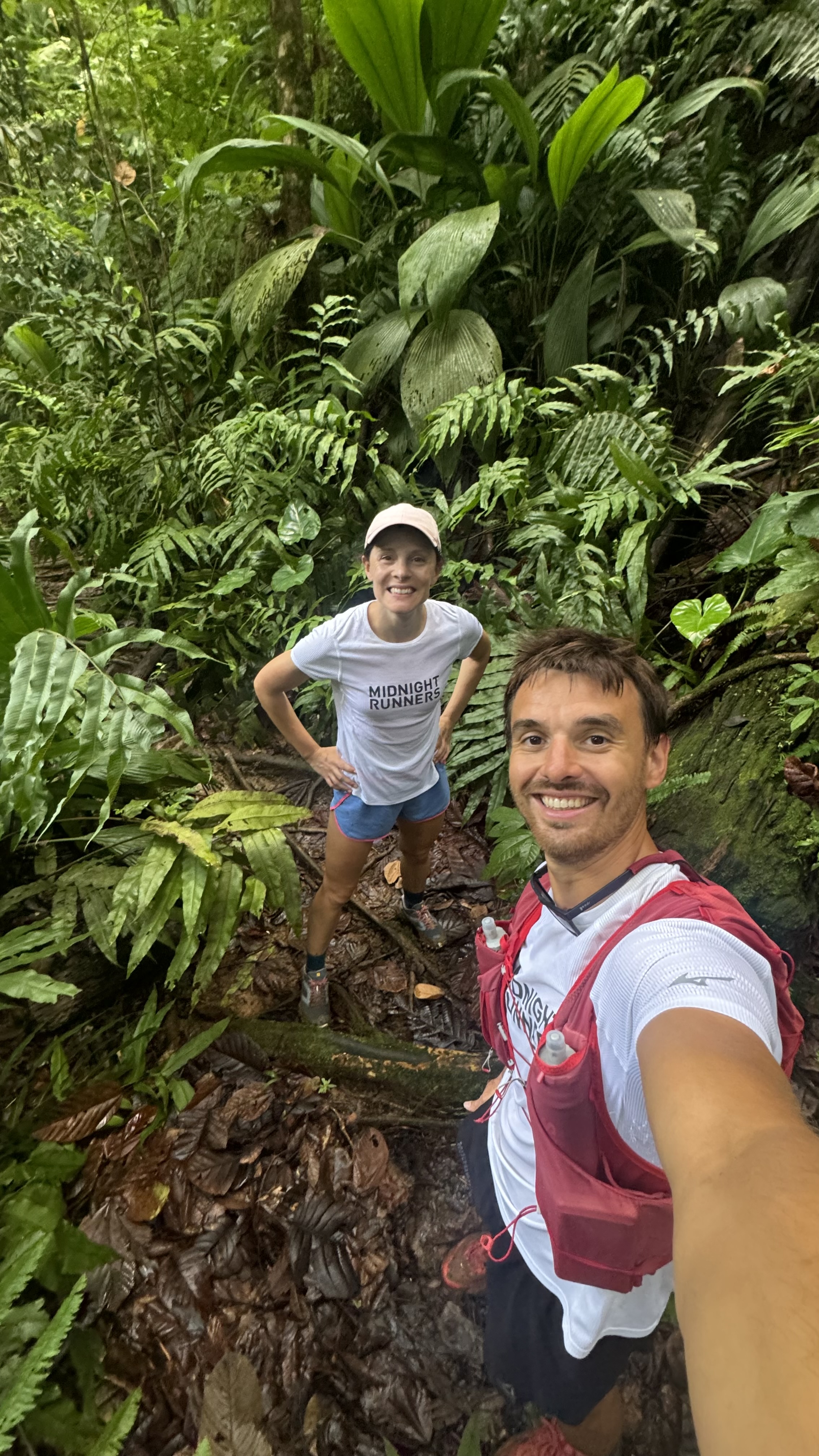
After Christmas we first thought we would continue to do some trail running and hiking. After all, this is one of our favourite activities. We realized, however, that neither of us were actually enjoying ourselves all that much, which seems impossible considering we were on a beautiful Caribbean island. The problem was that we were both feeling rather stressed: It was hard to enjoy when we knew we needed to find a boat still to continue our journey, and also the longer we stayed on the island the more we would eat into our budget in terms of accomodations. So the first lesson of boat hitchhiking learned:
Start searching for your boat right away when you arrive. Once you find one, it usually takes at least a few days before that boat is actually prepared to leave. This means that you will have a few days or more to enjoy the island, without the stress of knowing you don’t yet have a boat lined up weighing down on you.
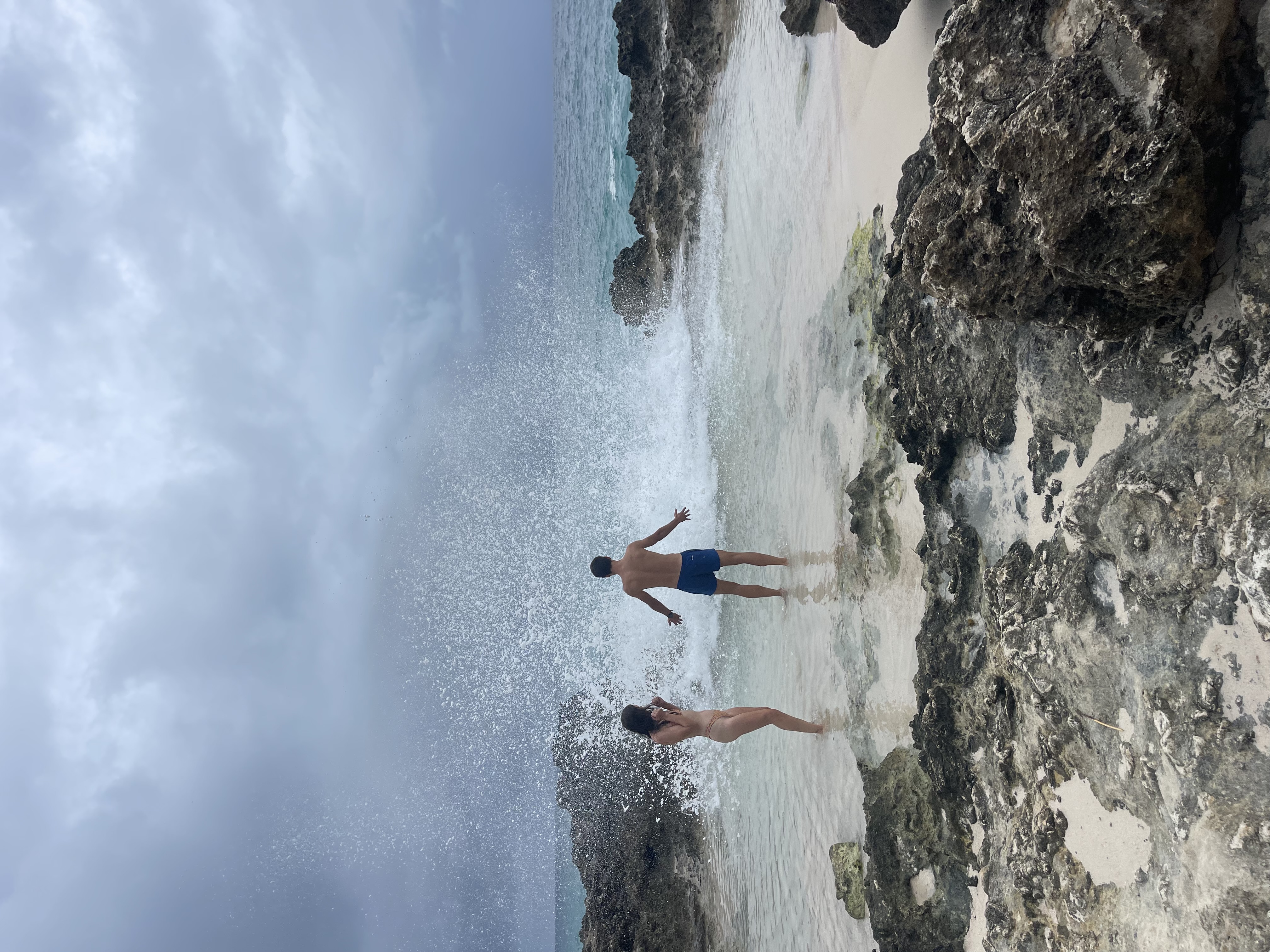
Our second lesson of boat hitchhiking in the Caribbean was learned more or less around the same time: Get connected. By connected, I mean use the apps. There are several applications that boaters use for navigation and connection to the community. These are important in the Caribbean, unlike the Canaries and Cabo Verde, there aren’t big marinas. Most of the boats are either moored or anchored a ways out off of the beaches, so we couldn’t just walk around on the docks talking to them the way we did before. The apps give you the capacity to message and speak with boat owners, marina or no.
The first one we learned of is called Navily. It was here that we met a kind Australian man who has been sailing with his wife, his kids, and two full-time crew on his brand-new, incredibly beautiful catamaran. He offered to take us to Antigua, which is just a short, 6-hour sail north of Guadeloupe.
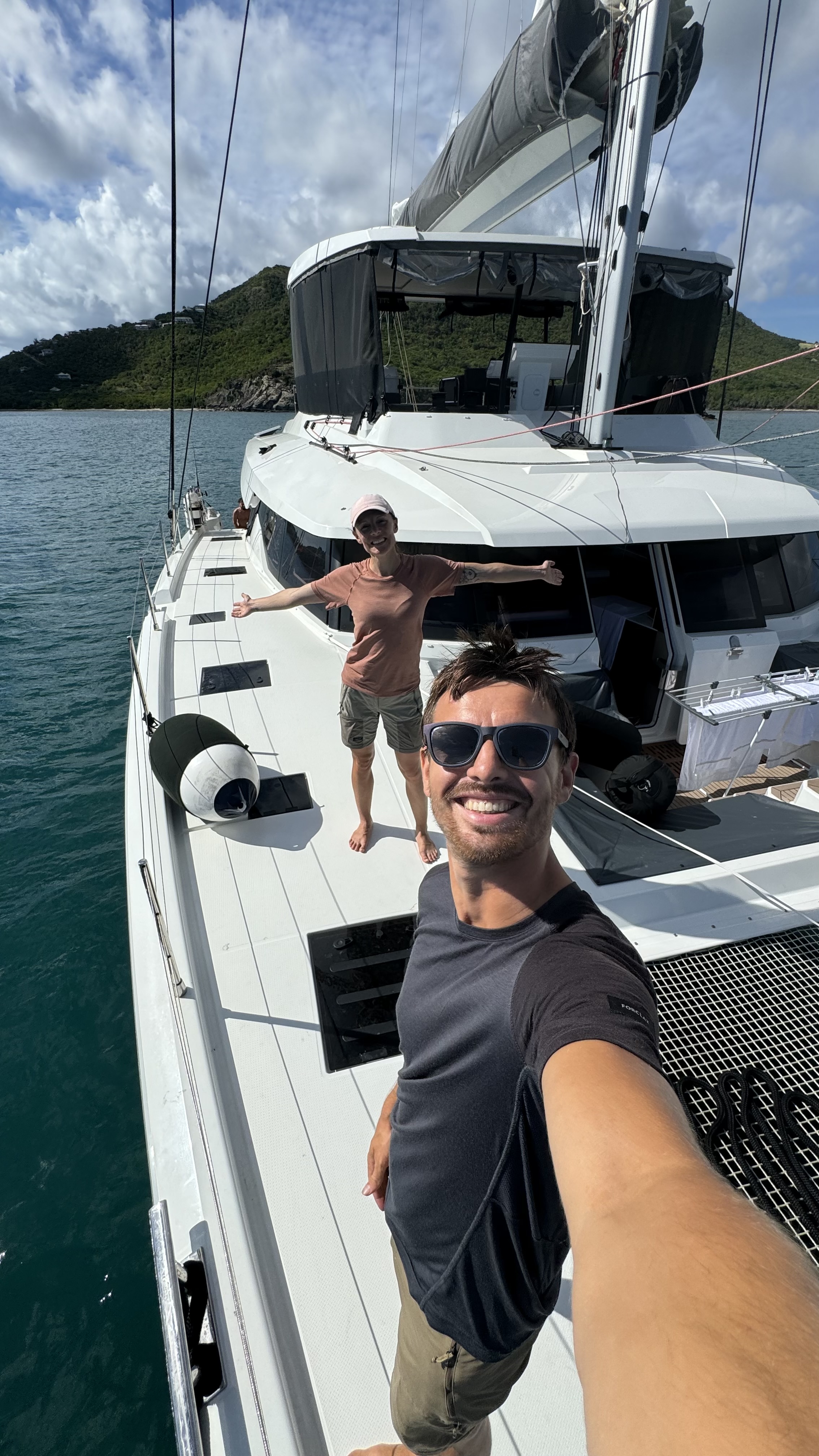
It was upon arrival in Antigua (or rather, our departure just over a week later) that we learned our third lesson in boat hitchhiking: Make sure you do your entries and departures properly. Our Australian friend dropped us off on the dock and waved us goodbye. We stood there wondering Well, what do we do now? Do we declare ourselves without a captain? Or wait until we leave? Having just come off the French islands which are decidedly relaxed when it comes to their customs procedures, we went with the latter option, thinking Antigua would be the same. The problem is, as we found out, Antigua is the most strict island in all of the Caribbean for doing their customs properly.
Having learned our lesson in Guadeloupe, we secured our boat early to travel from Antigua to Saint Martin. We would do an overnight sail a few days after the new year with a captain from a charter company who was delivering a catamaran to the french side of Saint Martin. Perfect! With that we relaxed and enjoyed what the island had to offer.

As a side lesson for boat hitchhiking, if you are doing so on a tight budget, we don’t recommend trying to do what we did. Travelling north through the Caribbean in December/January is the opposite direction of most boats that time of year. The Caribbean is also very expensive, especially during the holidays. If it weren’t for our friends’ wedding, we would have avoided it altogether and gone straight from Cabo Verde to Brazil. Alas, here we were: Antigua at New Years, where even the least desirable of accommodations costs more than $100 per night. We camped on the beach a couple of nights (sorry parents!).
Back to lesson number three: Do your check-ins and outs properly. The day before it was time to leave, we thought about how we had never checked into Antigua. In order to not be of a bother to our captain who would be doing the check-out the next day for the three of us, we thought we’d go down to customs and explain the situation. That turned into us being questioned at the customs office for four hours and nearly getting deported. You read that right.
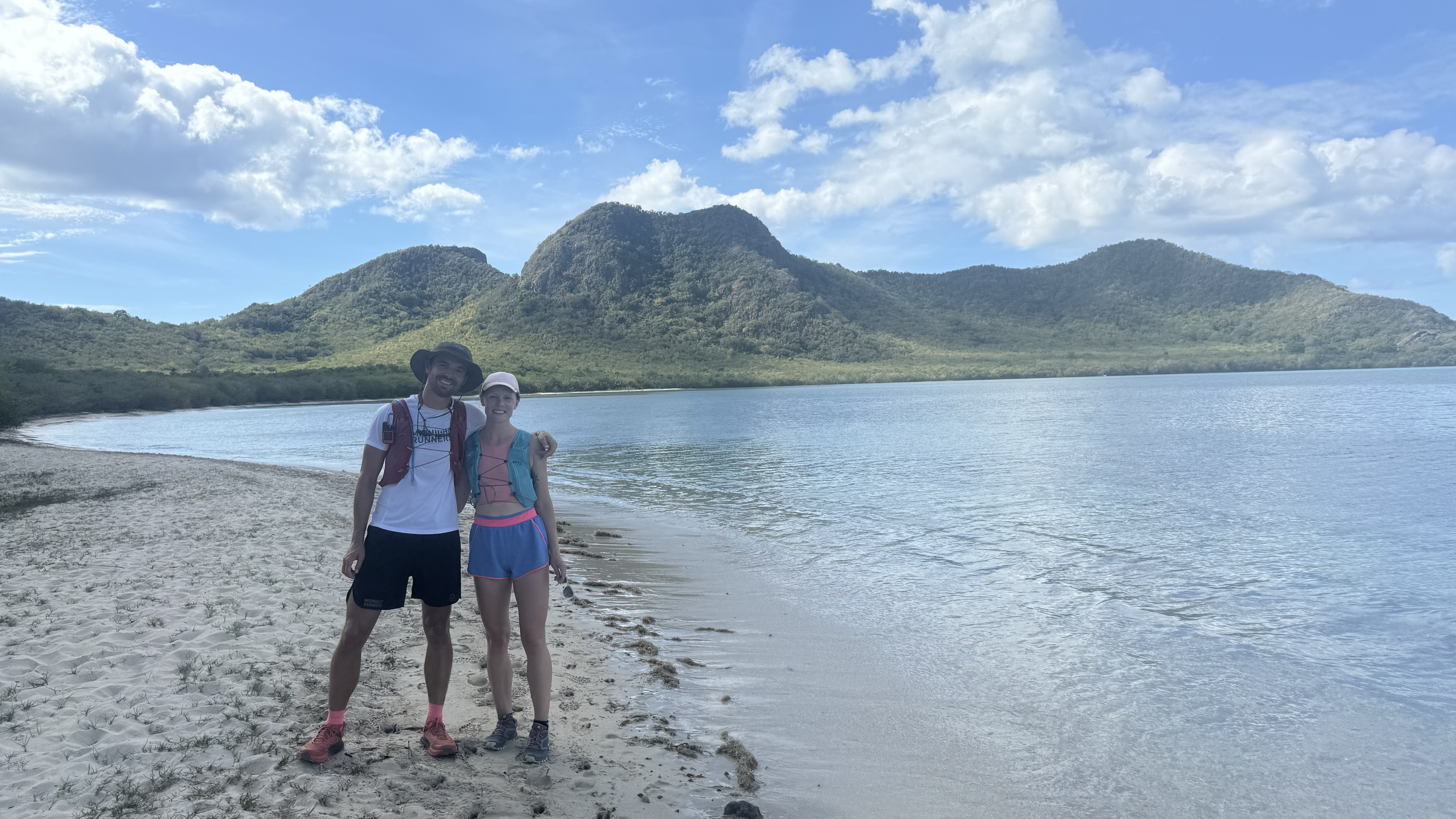
Thankfully, our captain, who we had met in person for five minutes the day before, turned out to be the kindest person we have ever met. Having been in the industry in Antigua and the Caribbean for 40 years, he came down to the office and went to bat for us. So instead of being put in jail and delivered to the airport where we would be put on planes to Canada and France respectively, we spent the night sleeping on a beautiful catamaran and eating homemade fish burgers made from fresh-caught fish with our captain, his manager, and his family. When we asked our captain what we could do to repay him, all he said was to pay it forward, help someone else the same way. So we guess it’s lesson #3 and #3.5: Do your customs properly, and help people out when they are in need.

Arriving in Saint Martin quite shaken from our near-deportation, we set off straight away trying to find our next boat. On the navily app, another user tipped us off to two other, more popular applications: SeaPeople and NoForeignLand. Between messaging 50+ people per day on the app and going to marina areas to talk to people, we really hit the ground running. We had a problem though: Saint Martin is expensive. Prohibitively so. We went to one of the marina restaurants feeling quite dejected. Stressed about finances, we decided that within the next 48 hours if we didn’t have a boat, we would just fly the rest of the way to the Dominican Republic. We couldn’t afford the Caribbean anymore! Less than a half-an-hour later, Jo struck up a conversation with some young French people at the table next to us. They were all there working in the superyacht industry. We told them about our trip but how we were about to give up because of the price of accommodations in St. Martin. Another experience of extreme kindness from a stranger, one of the guys said well, I have a spare bedroom in my apartment I am not using - why don’t you come stay with me until you find your boat? We were saved! We stayed with him for nearly a week before we found our way on board our next boat.

Here’s another thing about boat hitchhiking: While it can often be more or less free, it isn’t always. Our next boat was an American guy who was working to start up his own charter business. He offered to take us from St. Martin through the virgin islands and all the way to Puerto Rico - but it wouldn’t be for free. At first, he gave us his regular pricing ($400-$
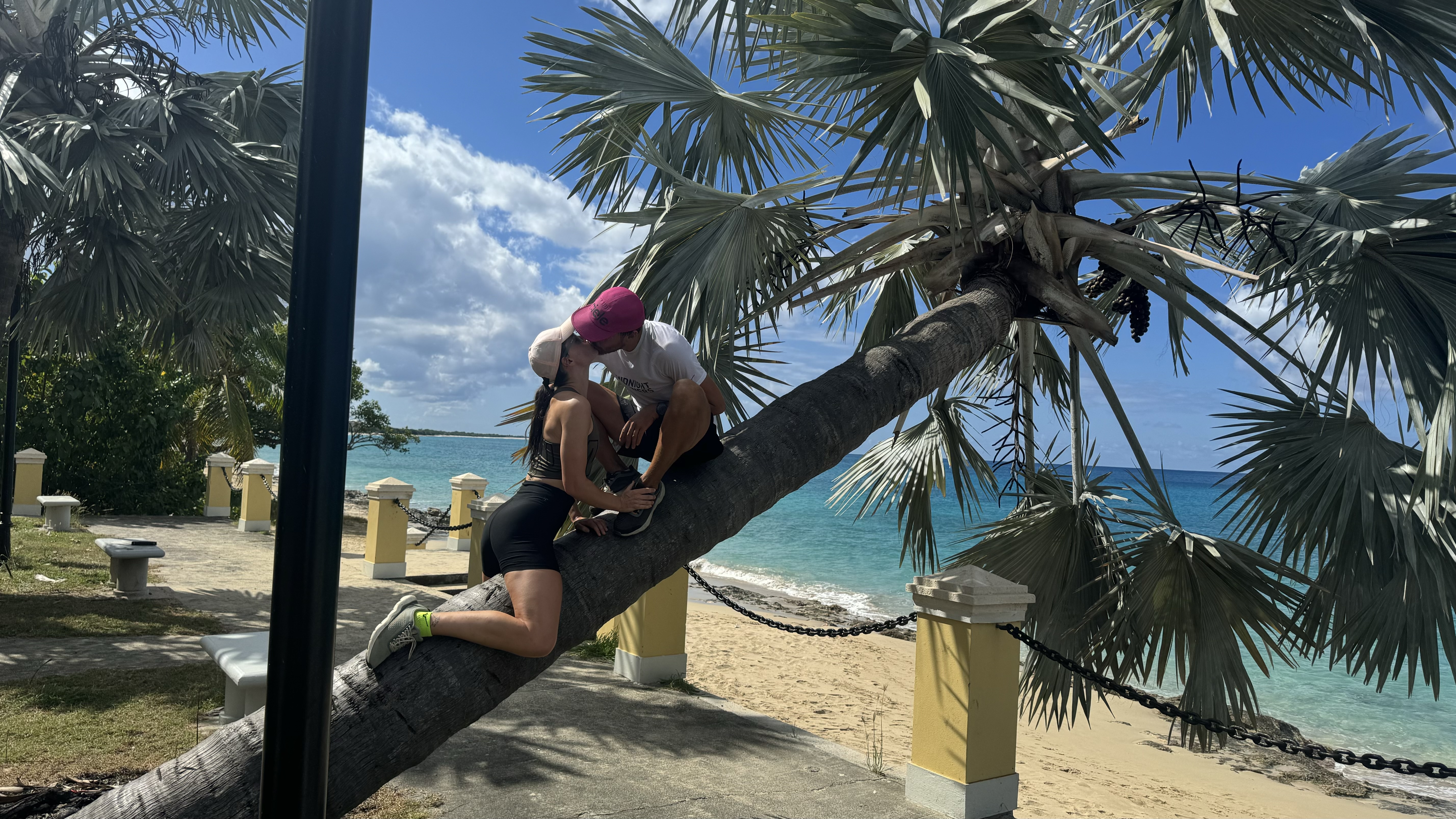
The only hiccup in this passage is that Jo, being from Europe, couldn’t just enter American territory on a private vessel with a stamp confirming his ESTA (tourist visa for Europeans) in his passport. So, we had to drop him off in Virgin Gorda in the British Virgin Islands, where he took the ferry across to St. Thomas in the USVIs, got the stamp in his passport, and then hopped back on the return ferry to the BVIs. That stamp, which now allowed him to enter US territory on a private vessel, cost us a pretty $100, making it potentially the most expensive passport stamp Jo will ever receive! After our near deportation in Antigua, however, it was worth every penny.
We had a great sail through the islands until we reached Salina, Puerto Rico. From there, we went and spent one night camping in the mountains at a camping site owned by the most energetic, but kindest Puerto Rican woman we have ever met. A proud and passionate Puerto Rican and also former sergeant for the US army, she and her husband now owned and operated a camping site and BnB in the mountains. They wanted to encourage people to come see the mountains of their country, not just the beaches. We definitely recommend it if you ever go to Puerto Rico - the mountains are beautiful. Not only did she come and pick us up in Salinas and drive us to the campsite, but she and her husband also drove us to San Juan the next day. This is where we learned that in Puerto Rico, no one drives without a ‘driving beer’ - aka a Medalla Light. At least it was a light beer (sorry again, parents!).
We spent the next day in San Juan, the capital city. It just happened to be the last day of the city’s Festivales de la Calle San Sebastian - a music street festival that takes over the entire historic center of the city. Puerto Rico is one of the hearts of latin music and the birth place of reggaeton, so this wasn’t just any old street festival. Some of Latin America’s biggest salsa, bachata, and merengue artists were there to perform - for free! With thousands of people filling the streets, it was a welcome to San Juan like no other.
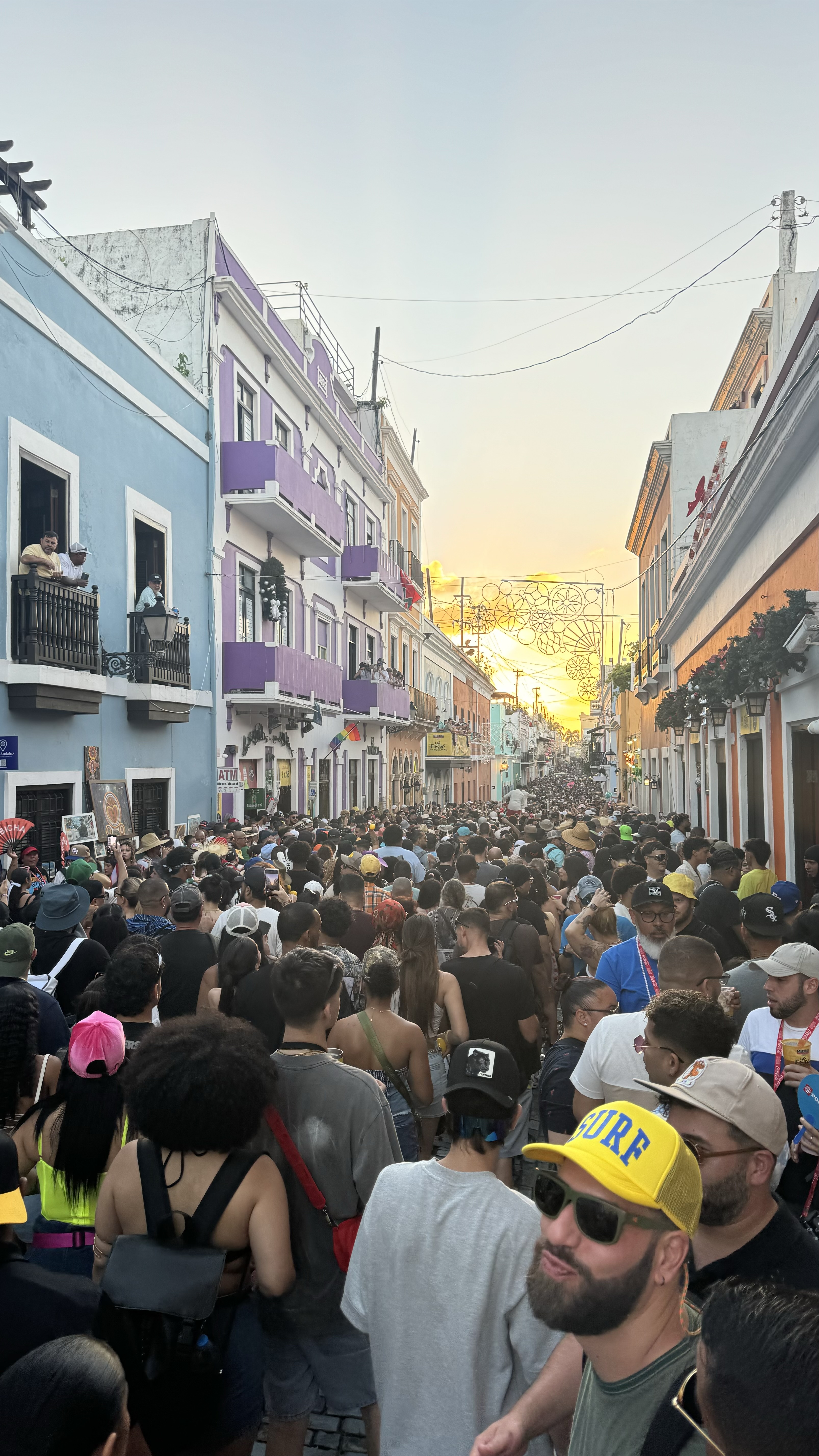
The next day, we boarded what would be our last boat to the Dominican Republic: El Ferry Del Caribe! This is a ferry/mini-cruise that travels overnight from San Juan to the DR and vice-versa. There are restaurants on board, bars, entertainment, games and everything, so it is almost like a mini cruise. You can purchase tickets that include a cabin for sleeping, but we went with the cheapest option and just slept in the reclining chairs.
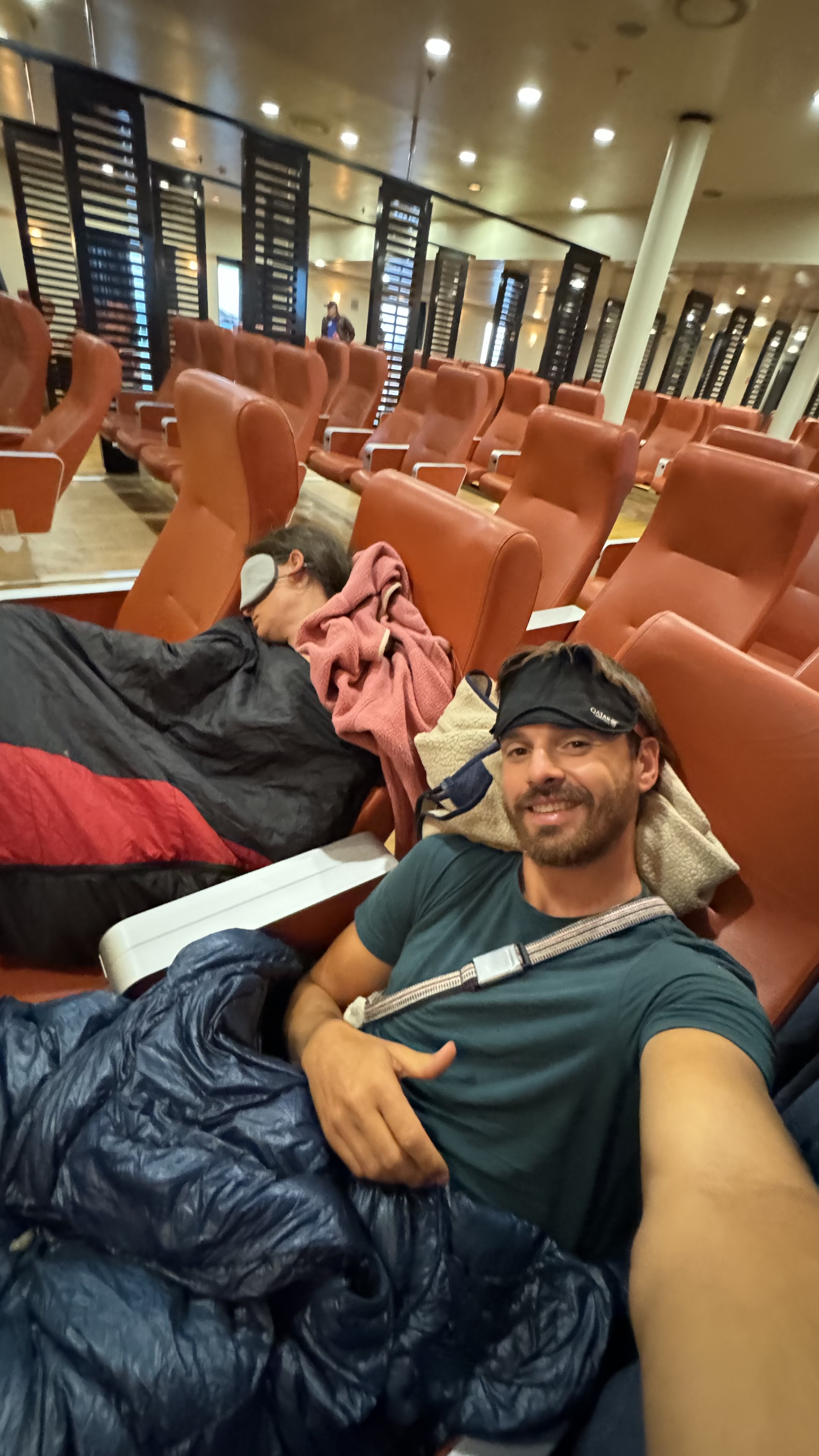
After a day in Santo Domingo, travelled by bus to Punta Cana, making it right on time for the wedding week: A much-needed week of relaxation in an all-inclusive resort. The best part was being reunited with some of Julie’s best friends from home and, most importantly, her twin sister. Saying goodbye at the end of the week was really hard and involved plenty of tears, but it was worth it to see friends and family.
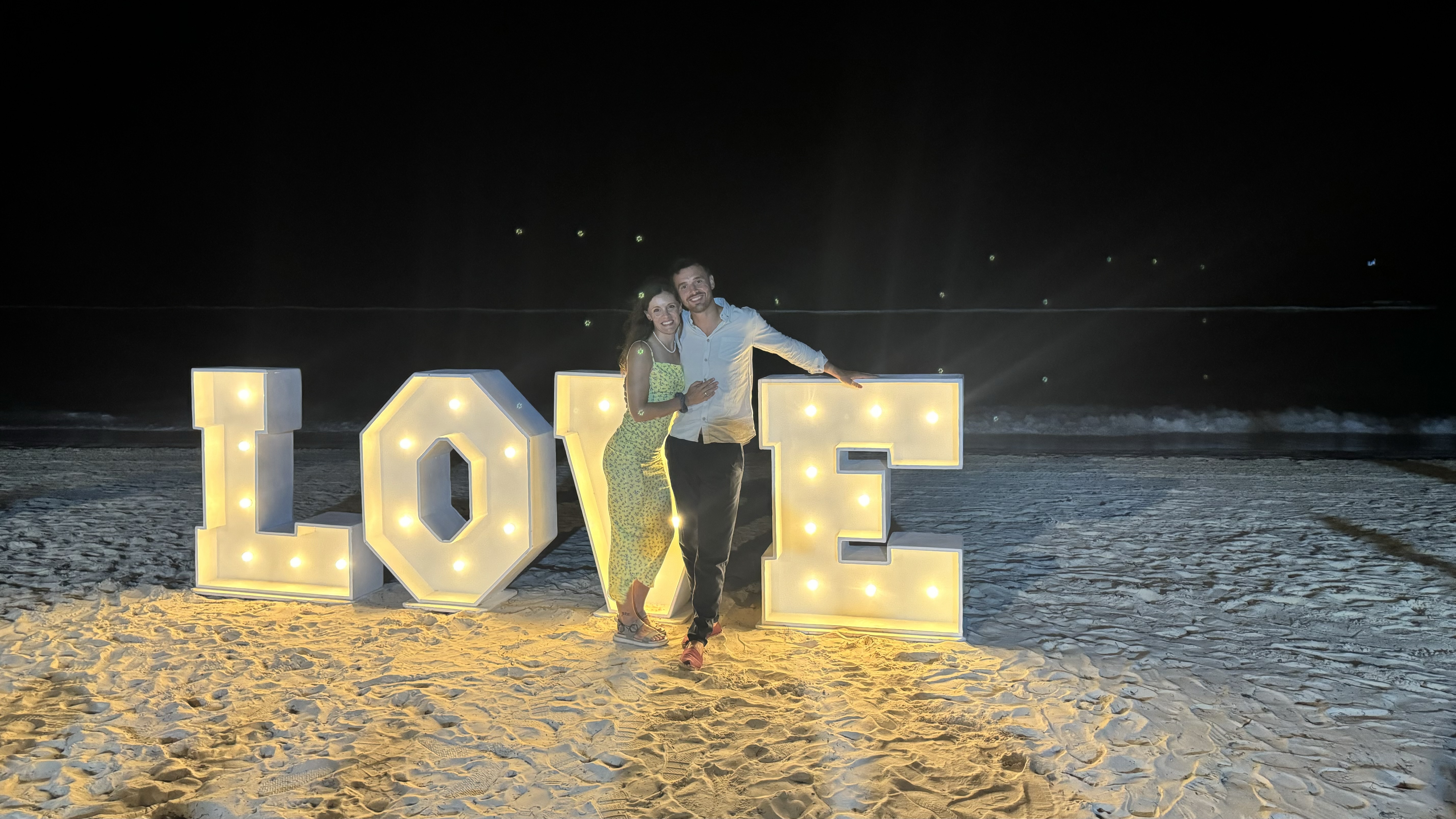
Again, having learned the lesson from Guadeloupe, we already began messaging boats in the DR. Our captain who dropped us in Puerto Rico tipped us off to a Canadian captain who had posted in one of the many boaters and cruisers Facebook groups that he was travelling from the DR to Guatemala around the 10th of February. This was perfect for us, so we sent him a message. Less than 24 hours later we had confirmed our passage. This meant a stress-free week at the resort, and meant we had time to enjoy the rest of the island outside of touristy Punta Cana. We went to an area called Samana, where we worked at a dog rescue walking the dogs for a week in exchange for free accommodation. We also got to go see the humpback whales, who were arriving in Samana to have their babies.
Just when were were planning to head to Luperon, where the main marina is, though, we received bad news: Our captain found a buyer for his boat and now it was 50/50 chance as to whether or not he could still take us. Discouraged, we then set to work messaging boats yet again. Thankfully, we found another American captain happy to have us on board. The only thing is, he was going the opposite direction: North, to the Bahamas. We knew this would mean more boat hitchhiking and also would likely mean having to travel through the United States in order to reach Latin America, which was not our preferred route. We thought it over, though, and realized that we didn’t want to risk it, so we said yes. Lesson number 5, we suppose, is don’t hesitate too much or you will lose your chance.

It ended up being a fantastic sail and the captain was an absolute gem of a person. Unfortunately, just as we arrived in the Bahamas, he fell quite ill. Apparently there was a flu-like pneumonia going through the Luperon boating community, and he caught it. Not wanting to leave him alone and also concerned about transmission to others, we stayed onboard to help him and until we were sure we had not caught the same illness.
Finally, everything seemed fine. We had in the meantime been searching for boats, but the problem was that everyone in Georgetown, the Exumas, who were planning on heading back north wasn’t going to do so until after the regatta, which was still 10 days away. Having already been there for a week and starting to feel a bit trapped, we decided we didn’t want to wait that long. We asked around at the government dock and got word of a mailboat, aka one of the local cargo ships, was taking passengers and leaving the next day to Nassau. We jumped at the opportunity.
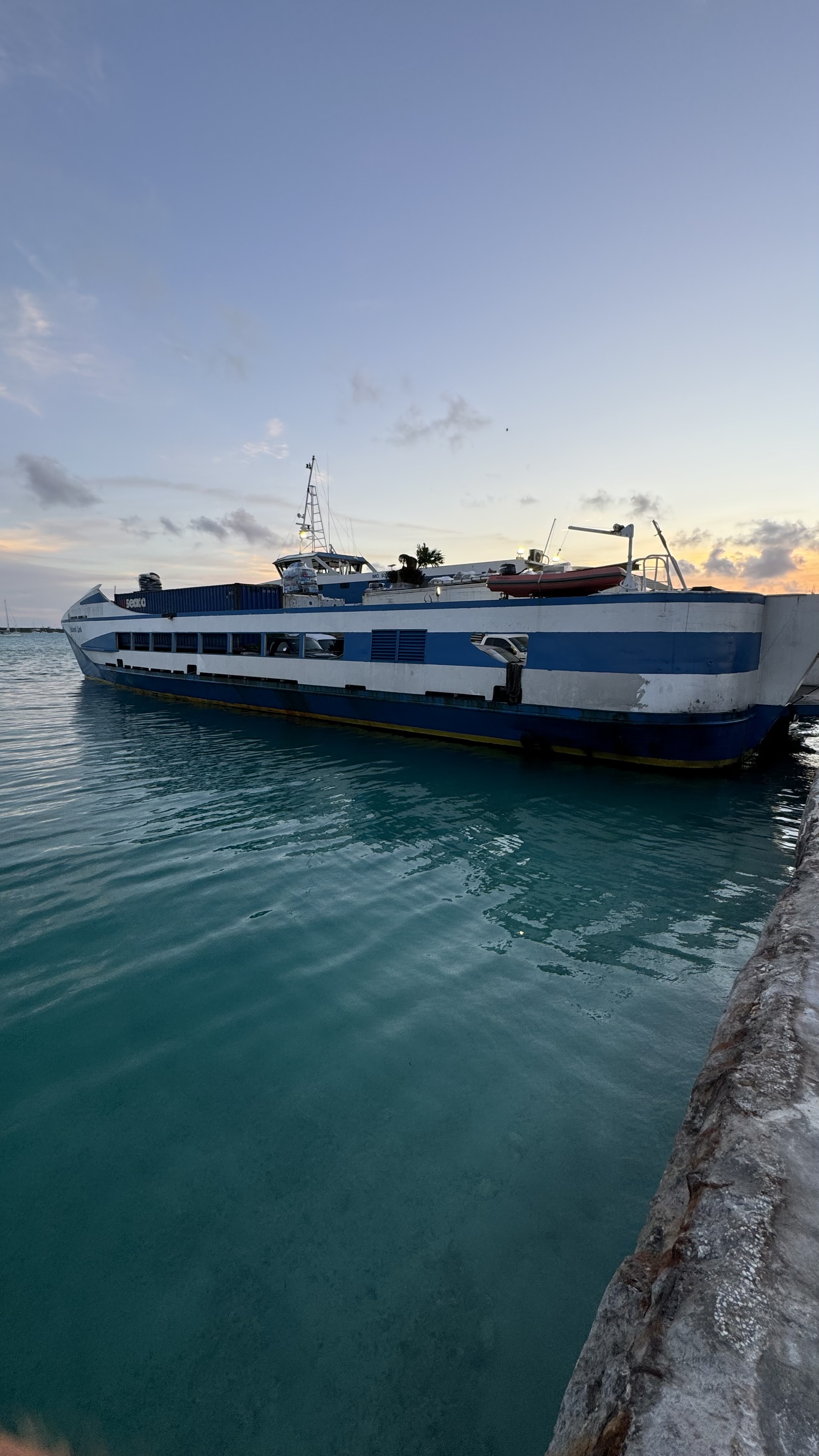
Here’s lesson number 6 about boat hitchhiking: Never be in a big rush. This will always take more time than you think. This includes mailboats. The boat we took, unfortunately, was not a straight shot to Nassau. The boat first went to Long Island, where it sat for 6 hours loading and unloading cargo, before travelling overnight to Nassau. This meant the trip would take over 30 hours. Ouch. We spent the 6 hours on Long Island going to eat at the single restaurant on the island. It was a fried chicken place run by an 88-year-old local named Mario. The day we were there just happened to be his birthday. Everyone - locals and expats - were all coming in to wish him happy birthday, give him gifts and cake, and each some chicken. The bonus of this was that we got to have some yummy homemade rum cake. The vibe of the whole place, though, was very strange. Everyone kept telling us you have to try the chicken! It’s the best chicken you’ll ever eat. Isn’t it the best chicken you’ve ever had? This is Mario, it’s his birthday, he’s the kindest person you’ll ever meet! All of this to the point where it started to feel quite weird, almost like Happy Town vibes. We were happy to be pulling away from there later that evening.
Lesson number 7 for boat hitchhiking is be prepared to have a backup plan. We arrived in Nassau hoping to get on another mailboat to Grand Bahama the next day, where we would meet a captain who would take us to Florida. The problem? We found out that there were no more mailboats going until the next week, and we couldn’t find any private boats, either. Naussa is not the best place to be stuck. It’s either Atlantis Resort-level expensive or very dangerous, known for violent crime including against tourists. Unable to afford the expensive hotels but feeling unsafe in the affordable neighborhoods, we decided to ‘cheat’ a little bit. We hopped on a 20-minute plane ride that took us straight north to Great Harbor Cay where we would meet our next captain. While we felt bad about it, we realized two things:
- This was an incredibly local experience: It was the smallest plane we’ve ever been on, with only locals, and it is how the locals travel between the islands.
- It was straight north, so technically speaking will still be able to say we went around the world without planes because we didn’t go west at all. Voila!
We arrived to meet our new captain, an American man with his wife who had been born and raised in China. With them, we sailed from Great Harbor Cay to Freeport and then on to West Palm Beach. It was on this trip that we learned another lesson about staying open to those who are different than you are or who think differently than you do. We will write a separate post about it, because it deserves a blog of its own.
With that, four months exactly to the day that we locked the door of our Paris apartment for the final time, we set foot on the continental Americas. 7 sailboats, 1 ferry, and one cargo ship later and we reached our biggest milestone yet. We are proud of ourselves and also relieved that our boat hitchhiking is over for a few months, until we need to travel between Panama and Colombia. For now, however, we will enjoy being on land. On to the next part of the journey!
